Chinese art to 1368
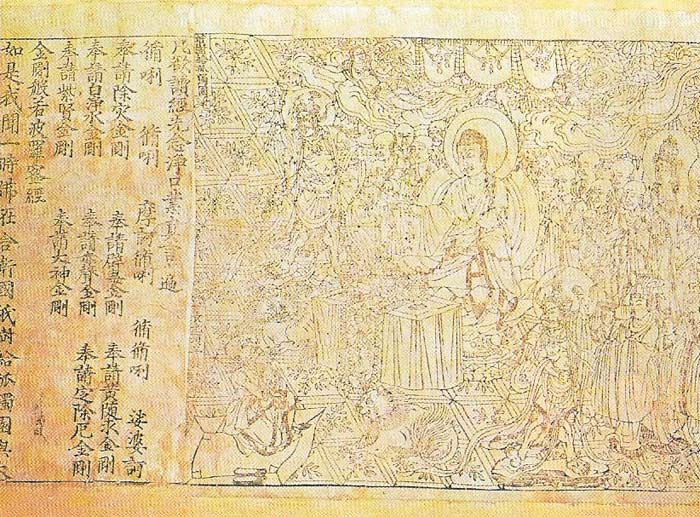
Figure 1. China expanded under Han rule, after unification by Ch'in. The growing silk trade had to be made secure, but Central Asia remained vulnerable to barbarian threats.
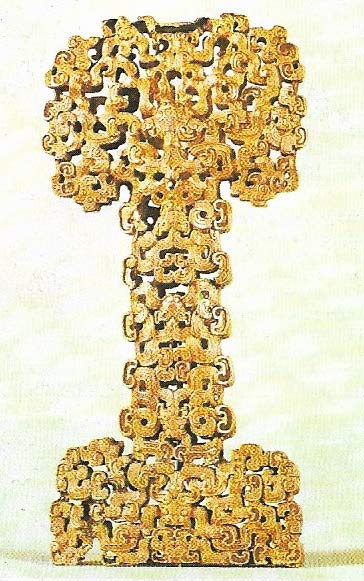
Figure 2. This dagger handle, of the Warring States period (475–221 BC), is of cast gold. The lost wax method was used for casting such intricate "cut through" designs. Cast gold work of this period is extremely rare.
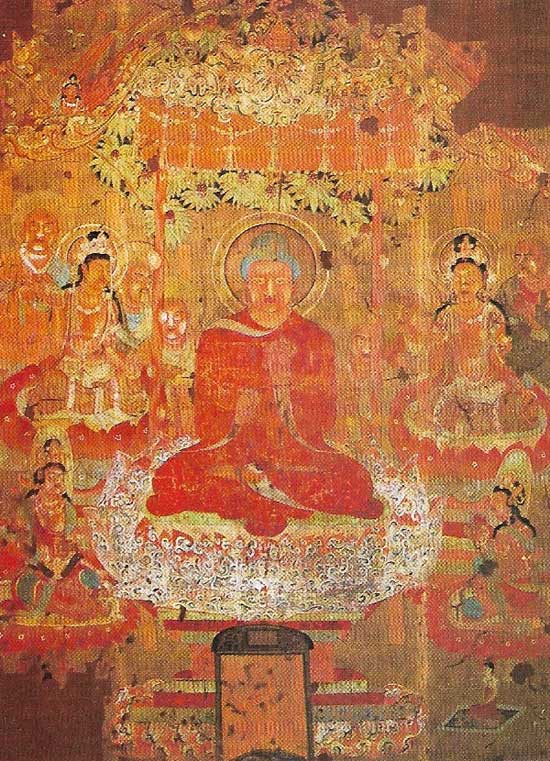
Figure 3. A meditating Buddha in Paradise is portrayed on this painted hanging, which shows the richness of T'ang painting. The influence of Buddhism in China reached its peak under the T'ang; the textiles, silver and pottery that were produced mark this as a classical period in Chinese art. The hanging comes from Tu-haung, a large Buddhist monastic center in northwest China where hundreds of cave temples were discovered with wall paintings.
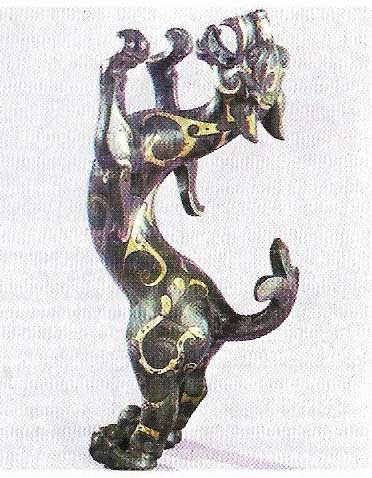
Figure 4. A winged lion of the Sung dynasty (960–1279), inlaid with silver and gold, was executed in the style of the late Chou dynasty (c. 1030–211 BC). It typifies one aspect of Sung taste. The decoration is similar to that of the Chou, but on a larger scale. In contrast to the preceding T'ang dynasty, when external influences such as Buddhism affected much of the Chinese civilization, the Sung was a period of self-conscious reassertion of traditional values in art and society.
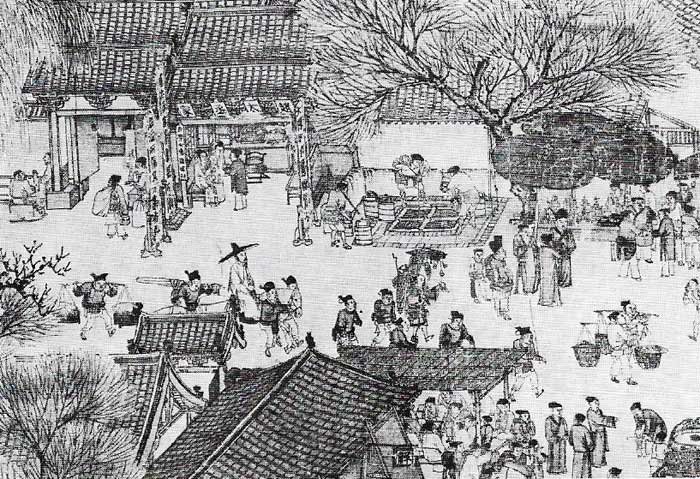
Figure 5. This handscroll of the thirteenth century was done in ink on paper by an anonymous artist. It depicts the preparations for the Spring Festival, when families gather to visit the graves of ancestors. It is a genre scene of great detail and interest, the style being complementary to the decorative romantic work of the same period.
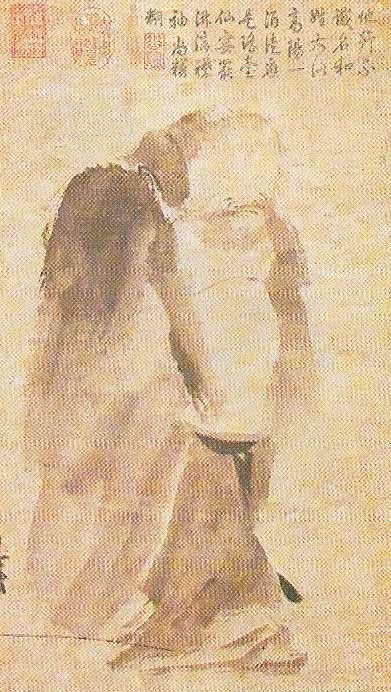
Figure 6. Liang K'ai was a famous Ch'an (Zen) Buddhist priest-painter of the mid-13th century. This hanging scroll of a walking priest is typical of his style. He used his ink and brush with the bravura of the academic Southern Sung masters, but added to this the Ch'an directness. The priest's personality is expressed with great simplicity.
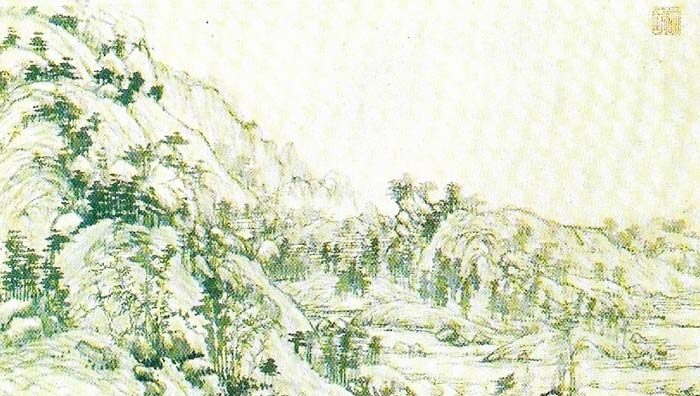
Figure 7. One of the most revered paintings in China is "Fu Ch'un Mountains" by Huang K'ung-wang. This ink on paper handscroll was painted over the space of about three years, when the artist, one of the Four Great Masters, was an old man. It typifies the character of the scholar-artist with its direct simplicity of technique which is based on the old masters, and the evocation of a quiet mountain landscape.
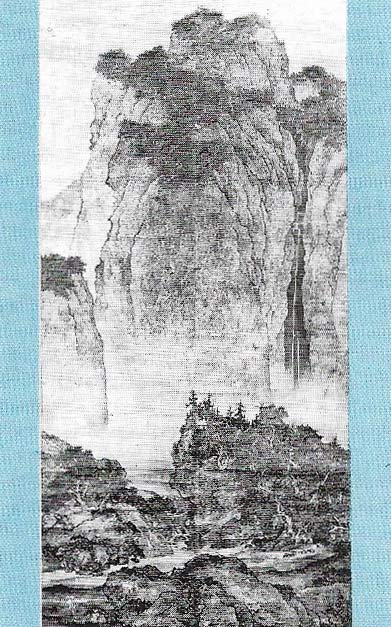
Figure 8. "Travellers among Streams and Mountains" is a hanging scroll of the early eleventh century by Fan K'uan. Painted in ink and slight color on silk, it is one of the early great masterpieces of landscape, and shows the classical style of construction. The foreground, in which tiny figures wend their way, is a little remote from the viewer. The horizon beyond them is defined by a cloud, a device used to express the space between the mid-ground and the towering mountain up which the eye travels to arrive at a third and fourth eye level. The painting is unselfconscious and has great dignity and serenity.
Neolithic Chinese society (c. 7000–c. 1600 BC) was centered on the Yellow River and organized in village communities. The potters made coil pots which they burnished and painted with black, white and red slip in striking animal, flower and abstract spiral designs. The shapes of later Neolithic pots were elegant and complicated; they appear to be related to bronze vessels of the first historic dynasty (Shang c. 1600–c. 1030 BC).
Early art forms
The ritual vessels of the Shang slave society ruled by a god-king were magnificently designed and cast. The shapes varied and the rich decoration was based on animal motifs. As society changed and the rituals lost their significance bronzes became more decorative, richer in appearance and often gilded. Decoration included floral motifs and was achieved by inlay and inserts of gold, silver and semi-precious stones.
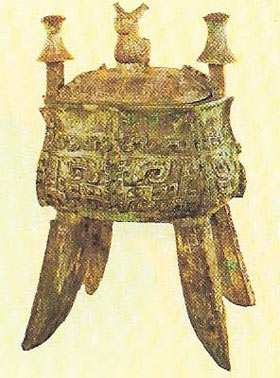 |
| Early Chinese bronze works, like this ritual vessel, a chia, of the 14th century BC (Shang dynasty), were cast from piece moulds, sections of mould bound together in such a way that they could be taken apart and re-used after casting. The decoration is arranged in bands round the vessel and is derived from animal motifs, which could either be realistic or mythical. Each ritual vessel had its own function – this was used for libation. |
Pottery had always been of great importance to the Chinese and through the centuries potters were developing the stoneware clay indigenous to the eastern areas of China, perfecting the throwing of the clay, glazing and firing to a high temperature. Lacquer painting was an early invention that also gradually evolved, particularly in the south of the country, to become an art form. With the invention of the brush and paper, written calligraphy as opposed to the incised character became a major art from which painting evolved, at first for ritual purposes. By the 2nd century BC, however, there is evidence of the use of painting as a medium of artistic expression.
The great Ch'in (221–206 BC) and Han (206 BC–AD 220) dynasties saw the unification of a country that encompassed many differing cultures. The newly evolved art of painting with color on cloth or paper was used to express the many myths and legends of this rich heritage. Some of the most lively painting came from the southern area, the old kingdom of Ch'u (present-day Hunan, Anhui area) and from the west in present-day Szechwan, where stamped brick and relief carvings were also used to portray everyday life and mythological scenes.
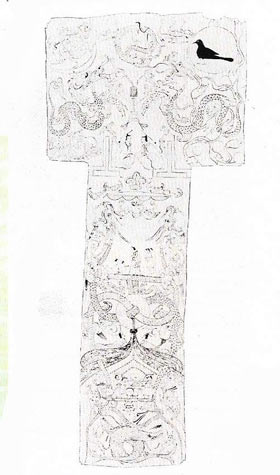 |
| A painted banner from a tomb of the early Han dynasty depicts both upper and lower world mythology. In the center is a portrait of the occupant, who was buried at Ma Wang Tui, Ch'ang-sha. |
Buddhism was introduced to China during the 1st century AD but did not appear in the arts until the 4th century. However, between that time and the ninth century great temples were built or cut from the living rock and were decorated by rock carvings or massive wall paintings and hangings (Figure 3) and furnished with images of gilt bronze or stone. Unfortunately periods of anti-Buddhist destruction have obliterated much of this huge output, only the great rock temples of north China remaining.
The art of the T'ang dynasty (618–907)
The T'ang dynasty is famous as one of the finest periods of artistic work of all kinds in China. It was a time of cosmopolitan vitality and metropolitan splendor which encouraged all the minor arts; a taste for extravagance led workmen to produce colorful work inlaid with cornelian and gold, beautiful silks and exotic inlaid musical instruments. Great religious paintings are recorded although they have not been preserved. The tow major artists were Wu Tao-tze (mid-8th century), a majestic figure painter who used a flowing brush line expressing volume and vitality, and his contemporary, Wang Wei (699–759), a poetic landscape painter, the originator of ink painting of handscrolls in which the tonality of ink expressed depth, texture and atmosphere.
A tradition of landscape painting
It was landscape painting that was developed by major painters through the succeeding four centuries (Figure 8). The classical period of the 10th and 11th centuries saw the painting of monumental mountain hanging scrolls, in which man is shown as a tiny inhabitant of a grand overpowering landscape. This concept gradually gave way to a study of the beauties of the smaller details – a single bird, a flower, or an incident on the banks of a river. Here the painter became interested in the style of his painting.
The scholarly taste of this period was expressed in all the crafts; the stoneware tradition of the celadons of Chekiang and the court wares of Kaifeng jade carving, gilt bronze (Figure 4) and ceramics. At the same time however, particularly in the north of the country, a robust taste for flamboyant decoration was displayed in the decorated wares of Tzu Chou.
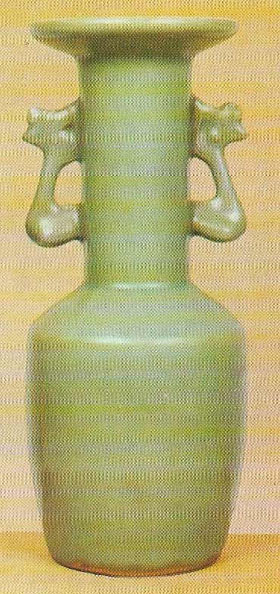 |
| Fine quality grey stoneware with a thick blue-green glaze was produced by the kilns of the upper Tsung River valley. It was known in Europe as celadon ware. This mallet-shaped vase is of L'ung Ch'uan celadon ware (late 12th or early 13th century). Typically, it is simple in shape and decoration and depends for its quality on the exceptional texture of the glaze. Some of the world's moat elegant ceramics were produced at that time. And this represents one of the classic wares of China, appealing to the refined Southern Sung taste and to the scholarly taste of later periods. |
The great flowering of decoration on ceramics with the introduction of cobalt underglaze painting techniques and the painting of lacquer in gold and red to produce rich boxes and small furniture seems to mark a sharp change of taste but perhaps is more an underlining of the added riches and complementary character of the north and south of this huge country. During the early and mid-fourteenth century there was another great flowering of painting.
Declining to serve the foreign Mongol court in the traditional role of bureaucrat, scholar-gentlemen gave their time to painting, comparable with the activity and gravity of production of the 10th and 11th centuries. The Four Great Masters, Ni Tsan (1301–1374), Wang Meng (died 1385), Wu Chen (1280–c. 1354) and Haung Kung-wang (1269–1354) (Figure 7) painted in traditional but entirely personal styles to lead the way for the next three centuries in the unfolding of the honourable tradition of landscape painting.
